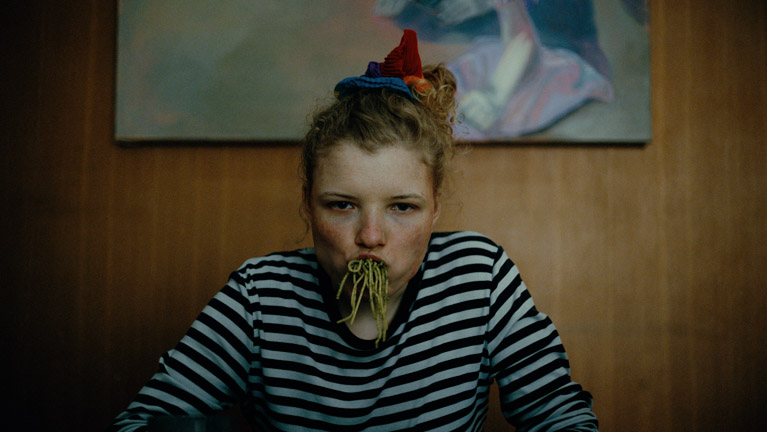
A film by Florian Pochlatko
With: Luisa-Céline Gaffron, Oliver Rosskopf, Cornelius Obonya, Elke Winkens, Felix Pöchhacker, Harald Krassnitzer, Lion Thomas Tatzber, Wesley Joseph Byrne, David Scheid, Jutta Fastian
Fresh out of a psychiatric hospital, Pia moves back in with her parents to get her life together. Torn between a new job, lovesickness, psychotropic drugs and social stigmatization, she emerges into a world where everything seems out of control.
Our rate: ***
Cinema questions the gaze. That of the viewer, who is invited to empathize with what he or she is given to see, but perhaps even more so, like most of the arts, that of its author, who from a given subject may choose this or that angle, this or that point of view, when he or she quite simply chooses not to deliver his or her point of view. This question extends even further when we consider the often-thin line between documentary and fiction, since a documentary selects images, manipulates them in editing, comments on them – or not, and in this way constitutes a fiction reconstructed from images taken here or there, just as a fiction strives to construct images to serve the work, to highlight this or that element, be it a message, a question, an emotion, or an action/event. The relationship with reality then comes into play: capturing reality, representing it, symbolizing it, escaping it or questioning it. In this way, Nicolas Philibert was able to make his own the subject of psychiatry, which is very poorly represented in cinema, which, since its beginnings, has conveyed the myth of the madman, very useful for entertainment purposes (whether it makes you laugh, or frightens you, whether it moves you or transgresses), very far from the everyday reality, that of the patients, the psychotics, or even more, that of the close or distant entourage. And it’s an understatement to say that his vision disturbed us, even more so when you consider that it’s praised, so much so that he takes up the cause of one side of the issue, that of psychiatrists and their struggle, and manipulates patients to soften the viewer, without ever putting himself in their place, without ever asking the right questions, such as those concerning society, the way society looks at psychotics, the place reserved for psychotics by society, without nuance (some psychotics hold very high positions, others are totally unsuited to the world of work, left to fend for themselves, and sent to asylums), or questioning the problems encountered with the solutions implemented today, the chemical straitjacket, in many respects open to criticism (sometimes serious side-effects, impact on sociability, on the relationship to life, on intellectual alertness), without ever going into the whole question, presenting it in all its complexity. We don’t find these major flaws in Florian Pochlatko‘s How to be normal and the oddness of the other world, an hour-and-a-half-long drama which, unlike Nicolas Philibert‘s claim to neutrality by confessing to not knowing the subject closely, and therefore a form of virginity in the face of it, proves to be well-informed, precise, addresses different perspectives, takes the side of mimicking inner voices and hallucinating images, and never forgets to involve others. Although unrealistic, Requiem for a Dream was a landmark at the time in the field of tranquilizers; How to be normal and the oddness of the other world does the same with pharmacopathy, while offering an entertaining, amusing spectacle. In the background, it asks the right questions. Who are the crazy ones, the real ones? Who tips over? What mechanism keeps them in society, what excludes them? What does psychiatry offer in the way of solutions, and with what results? And, above all, it shows the violence of those who don’t consider themselves psychotic, who maintain myths, and behave in an unabashed way as guarantors of a certain order, governed by excessive fears and fed by these myths, in a way that is very comparable to those that lead inexorably to fascism and racism. By asking these questions, the director communicates his vision, and questions our own.
